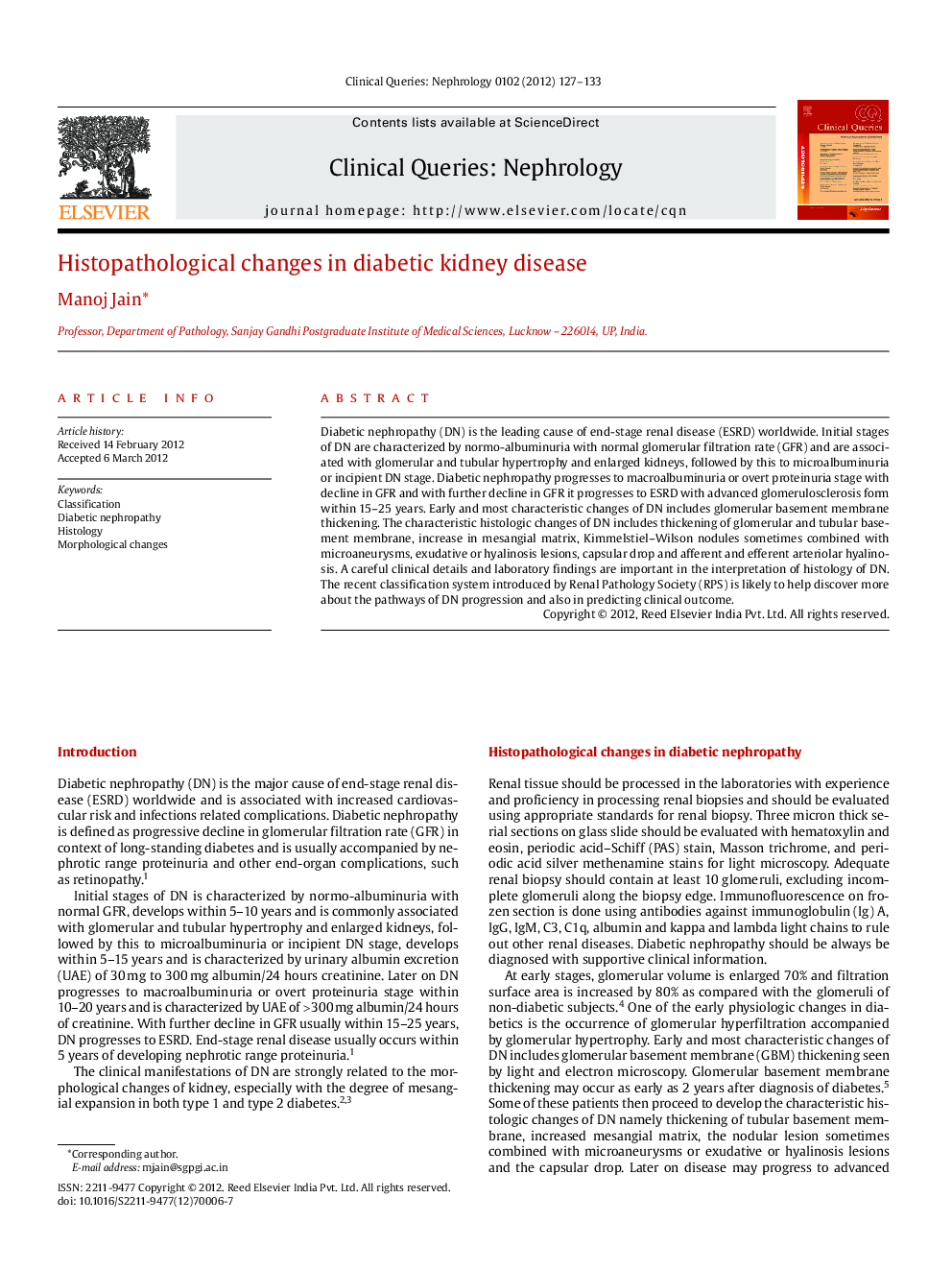| Article ID | Journal | Published Year | Pages | File Type |
|---|---|---|---|---|
| 3108040 | Clinical Queries: Nephrology | 2012 | 7 Pages |
Diabetic nephropathy (DN) is the leading cause of end-stage renal disease (ESRD) worldwide. Initial stages of DN are characterized by normo-albuminuria with normal glomerular filtration rate (GFR) and are associated with glomerular and tubular hypertrophy and enlarged kidneys, followed by this to microalbuminuria or incipient DN stage. Diabetic nephropathy progresses to macroalbuminuria or overt proteinuria stage with decline in GFR and with further decline in GFR it progresses to ESRD with advanced glomerulosclerosis form within 15–25 years. Early and most characteristic changes of DN includes glomerular basement membrane thickening. The characteristic histologic changes of DN includes thickening of glomerular and tubular basement membrane, increase in mesangial matrix, Kimmelstiel-Wilson nodules sometimes combined with microaneurysms, exudative or hyalinosis lesions, capsular drop and afferent and efferent arteriolar hyalinosis. A careful clinical details and laboratory findings are important in the interpretation of histology of DN. The recent classification system introduced by Renal Pathology Society (RPS) is likely to help discover more about the pathways of DN progression and also in predicting clinical outcome.
